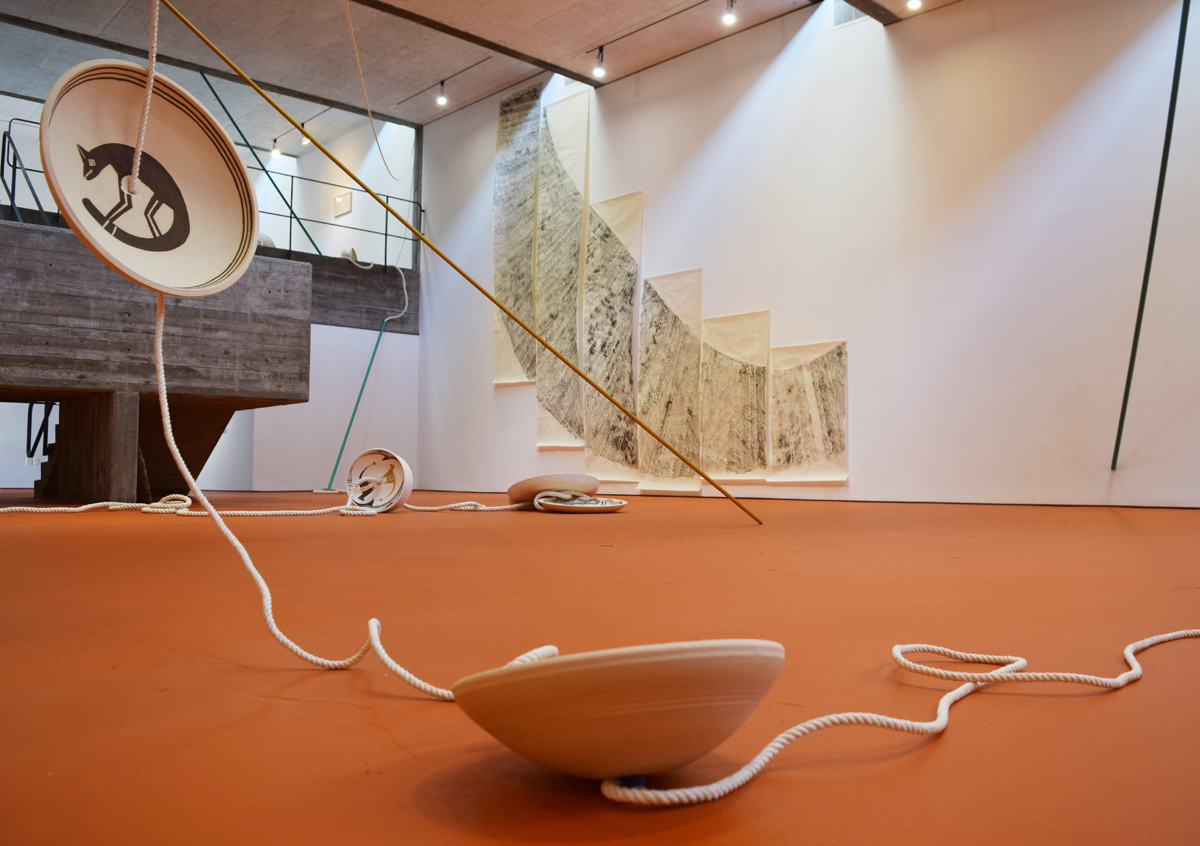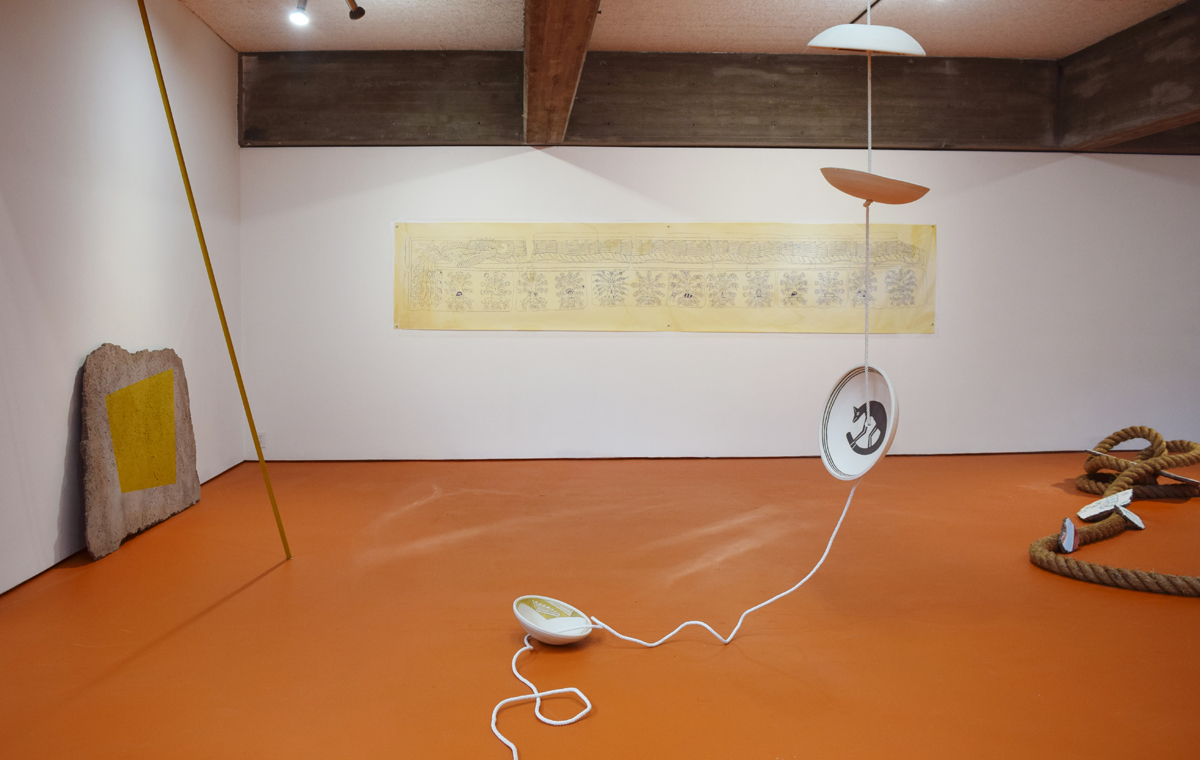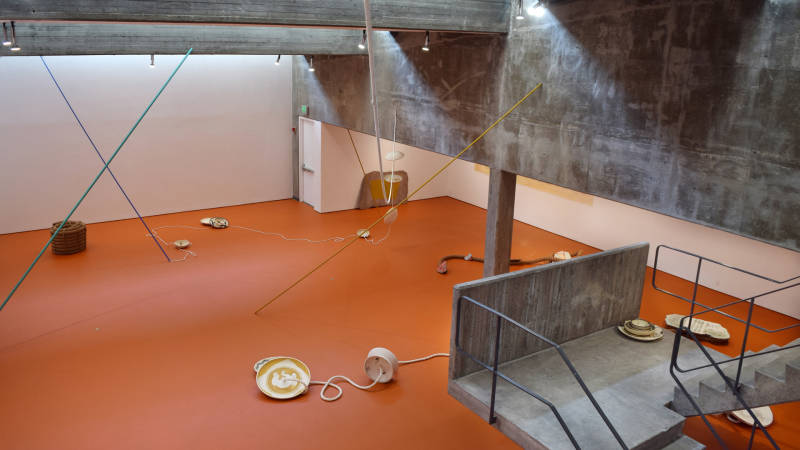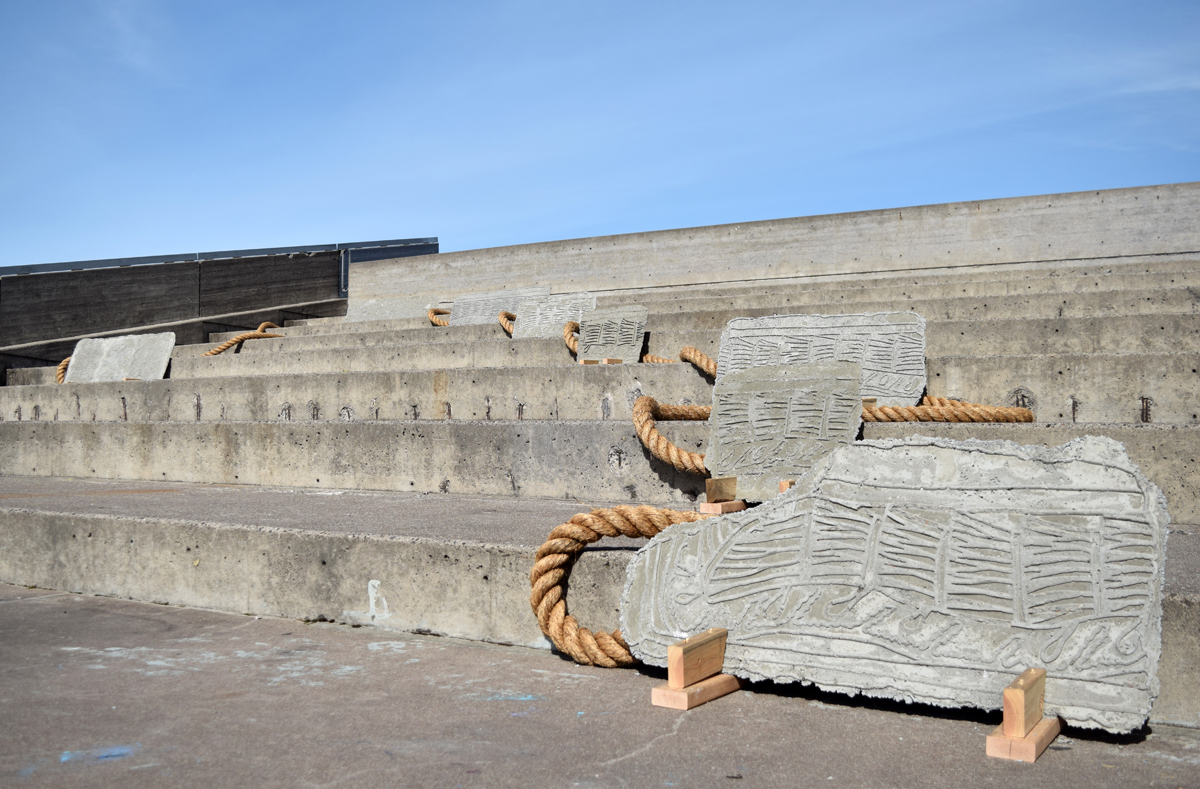I try not to put the word “history” in my headlines, under the (likely correct) assumption that any mere mention of the subject causes eyes to glaze over. And once the eyes glaze over, the understanding is, good luck getting those readers to click through. So I tricked you, and didn’t put “history” in this headline. Because this time, “history” isn’t a staid and boring lesson in the way things were — it’s a space filled with gaps, mysteries, conflicting stories and living legacies.

“Every time you try to read history you make it new,” says Mexican artist Mariana Castillo Deball. Her solo exhibition Feathered Changes, Serpent Disappearances, on view in SFAI’s Walter and McBean Galleries through July 30, is filled with references to and replications of historical things: ancient Mexican murals, Mayan and Mimbres pottery and the chance-based artworks of the late composer John Cage. In her hands, these disparate threads weave together with an ease that makes the viewer almost unaware they’re being lead through an alternate retelling of the dreaded subject of “history” and its artifacts.
Assisted by recent grad and SFAI + Kadist Fellow Christopher Squier, Deball’s exhibition delves into the collections of two Bay Area institutions — the Fine Arts Museums of San Francisco and Crown Point Press. The former houses the Harald Wagner Collection of Teotihuacan Murals, a surprise bequest to the museum of fragmented wall paintings looted from the walls of the ancient Mesoamerican mega-city of Teotihuacan. The latter published Cage’s experiments in printmaking from 1978 to 1992, including a series titled Changes & Disappearances, in which each printmaking decision was made using a computerized algorithm based on the I Ching, an ancient Chinese divination text.
For Deball, her interest in the Teotihuacan murals (specifically Feathered Serpent and Flowering Trees, a mimeograph reproduction of which is on view in the SFAI exhibition) and Cage’s Changes & Disappearances (the 27th iteration of which is also on view) isn’t just about the artworks themselves, but the institutions that preserve them.

A series of fresco fragments positioned throughout the SFAI exhibition are scaled-up versions of “crumbs” kept in storage at the de Young, illegible chunks of the mural that retain their status as archaeological artifacts within the museum’s collection. With the help of SFAI students, Deball created original frescoes with cement, lime plaster and pigment to mimic the de Young’s “crumbs.” Yet they also show evidence of aesthetic decision-making and elements of Cage-like chance; Deball reduces some patterns to just one or two colors, with changes in scale rendering the minuscule hefty.



